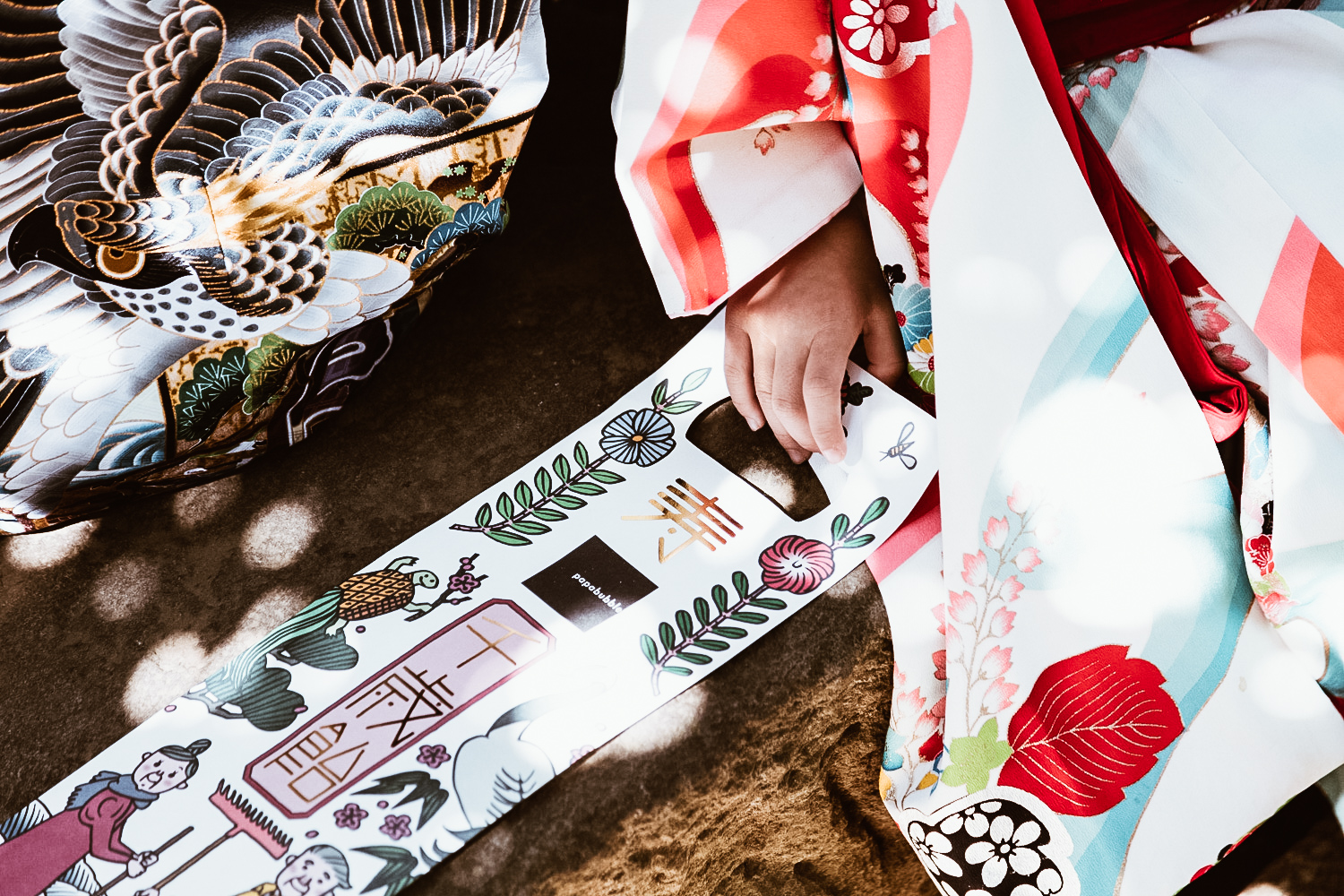Shichi-Go-San / Sette-Cinque-Tre
In Giappone il 15 novembre è il giorno di Shichi-Go-San (七五三, 7-5-3). Questo festival che celebra il rito di passaggio delle bambine di 3 e 7 anni e i bambini di 3 e 5 anni. Nella numerologia Giapponese questi numeri sono ritenuti particolarmente fortunati, come tutti i numeri dispari.

photo credits: cacadoresdelendas.com.br
Shichi-Go-San è il frutto di 3 tradizioni sviluppatesi nel periodo Heian, dapprima tra i nobili di corte i quali celebravano il passaggio dei loro figli alla “media infanzia”, successivamente nella classe Samurai segnando i passi importanti nella crescita. Fino a 3 anni il bambino doveva portare i capelli rasati, da questa età in su era loro concesso di portarli un po’ più lunghi. I maschi di cinque anni potevano indossare la hakama (袴, un indumento tradizionale che somiglia ad una larga gonna-pantalone lunga fino alle caviglie e legata alla vita) per la prima volta. Le bambine di sette anni invece, sostituivano le corde semplici usate per legare il proprio kimono con la tradizionale obi (帯, la tradizionale cintura di seta).
A partire dal periodo Meiji, la pratica fu adottata anche dai cittadini comuni introducendo la rituale visita un santuario shintoista per allontanare gli spiriti maligni e augurare ai propri bambini una vita lunga e prospera.
Shichi-Go-San e i sottili cambiamenti dell’era moderna

photo credits: amu-zen.com
Come la maggior parte delle tradizioni giapponesi, anche lo Shichi-Go-San mantiene quasi totalmente intatti i rituali del periodo Meiji. L’unica cosa caduta in disuso è la regola dei capelli. I bambini di cinque anni e le bambine di sette anni indossano ancora il kimono colorato per le visite ai santuari. Le bambine di tre anni solitamente indossano lo hifu (una veste simile ad un panciotto leggermente imbottito) insieme al proprio kimono. Alcuni bambini indossano abiti più vicini alle mode formali dell’occidente.
Oggi si scattano anche parecchie fotografie in questa occasione.
Ogni festeggiato, nel giorno dello Shichi-Go-San ruceve una busta decorata con all’interno le dolci Chitose ame (千歳飴), “la caramella dei mille anni”. Avvolte in carta di riso commestibile trasparente, queste caramelle ha forma di bastoncino, tradizionalmente di colore rosso e bianco sono simbolo di longevità.
Condividi:
- Fai clic per condividere su Facebook (Si apre in una nuova finestra)
- Fai clic qui per condividere su Twitter (Si apre in una nuova finestra)
- Fai clic qui per condividere su Tumblr (Si apre in una nuova finestra)
- Fai clic qui per condividere su Pinterest (Si apre in una nuova finestra)
- Fai clic per condividere su Telegram (Si apre in una nuova finestra)
- Fai clic per condividere su WhatsApp (Si apre in una nuova finestra)
- Fai clic qui per condividere su Reddit (Si apre in una nuova finestra)
- Fai clic qui per stampare (Si apre in una nuova finestra)






